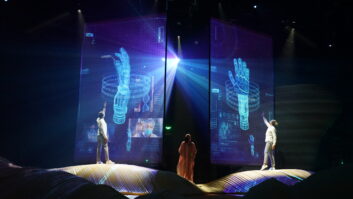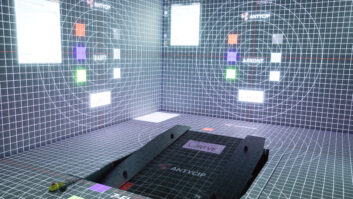
3D for the home is continuing to gain ground in leading markets, according to a new Home 3D Tracker report issued by Futuresource Consulting.
A year on from the high-profile emergence of 3DTV, price levels associated with the technology have begun to drop and manufacturers are reporting rising sales. But there have been lingering concerns about the lack of sufficient content and the inhibiting effect of this on market growth.
According to Futuresource Consulting market analyst Fiona Hoy (pictured), limited availability of content at retail to this point “has placed greater importance on the role of the broadcast segment as a key 3D content source. Although early broadcast services struggled to provide the breadth and quality of viewing material that this nascent technology requires, many CE manufacturers have now formed partnerships with pay-TV operators to help co-fund and produce original 3D content. Many of these partnerships will last up to three years, by which time the market will have become more established. Collaborations have included Cyfra (Poland) and LG for 3D sports; NTV-Plus (Russia) and Panasonic; Sky (UK), LG and Panasonic; and DirecTV and Panasonic (USA). By the end of 2010, 31 3D pay-TV services were available throughout Europe, with 18 linear/demo channels and 13 VoD services. Across North America, 11 3D services have been launched, with two 24/7 channels and six separate VoD services.”
Broadcast will continue to play an important role going forward – not least because of high-profile service launches such as Sky 3D in the UK – but 3D disc title sales are “expected to see a significant boost this year, with a strong release slate which includes key franchises Harry Potter and Transformers,” says Hoy. “Although 3D represented less than 1% of total US Blu-ray retail sales during 2010, this is expected to reach nearly 25% by 2015.”
The outlook is generally positive, although the development of comfortable, lightweight 3D glasses will remain a point of discussion.
“Futuresource research continues to indicate that auto-stereoscopic technology is still many years away from offering the quality and large screen viewing experience demanded by the consumer and at an affordable price point,” said Jim Bottoms, director and co-founder, Futuresource Consulting. “Several key technical issues still remain: a highly restricted viewing angle and a limited number of viewing points or ‘sweet spots’ are among the primary challenges. Outside the sweet spot, the viewer sees either no 3D effect or, worse still, a reverse image which is highly uncomfortable to watch.
“Although 12-inch and 20-inch glasses-free 3DTVs are now available in Japan, designed primarily to work for a single viewer, a large screen watched by more than one person may need to display up to 100 unique views, each of which must be created separately. Even when the TV technology is in place, the production issues for live action content are still likely to be a major hurdle, as creating content for these multi-view displays requires multiple cameras and a different production/broadcast infrastructure.”
More for more information about the new Futuresource Home 3D Tracker report, or to make a purchase, contact Jim Bottoms at Futuresource Consulting on +44 (0) 1582 500 100 or visit www.futuresource-consulting.com.
Information source: Futuresource Consulting





